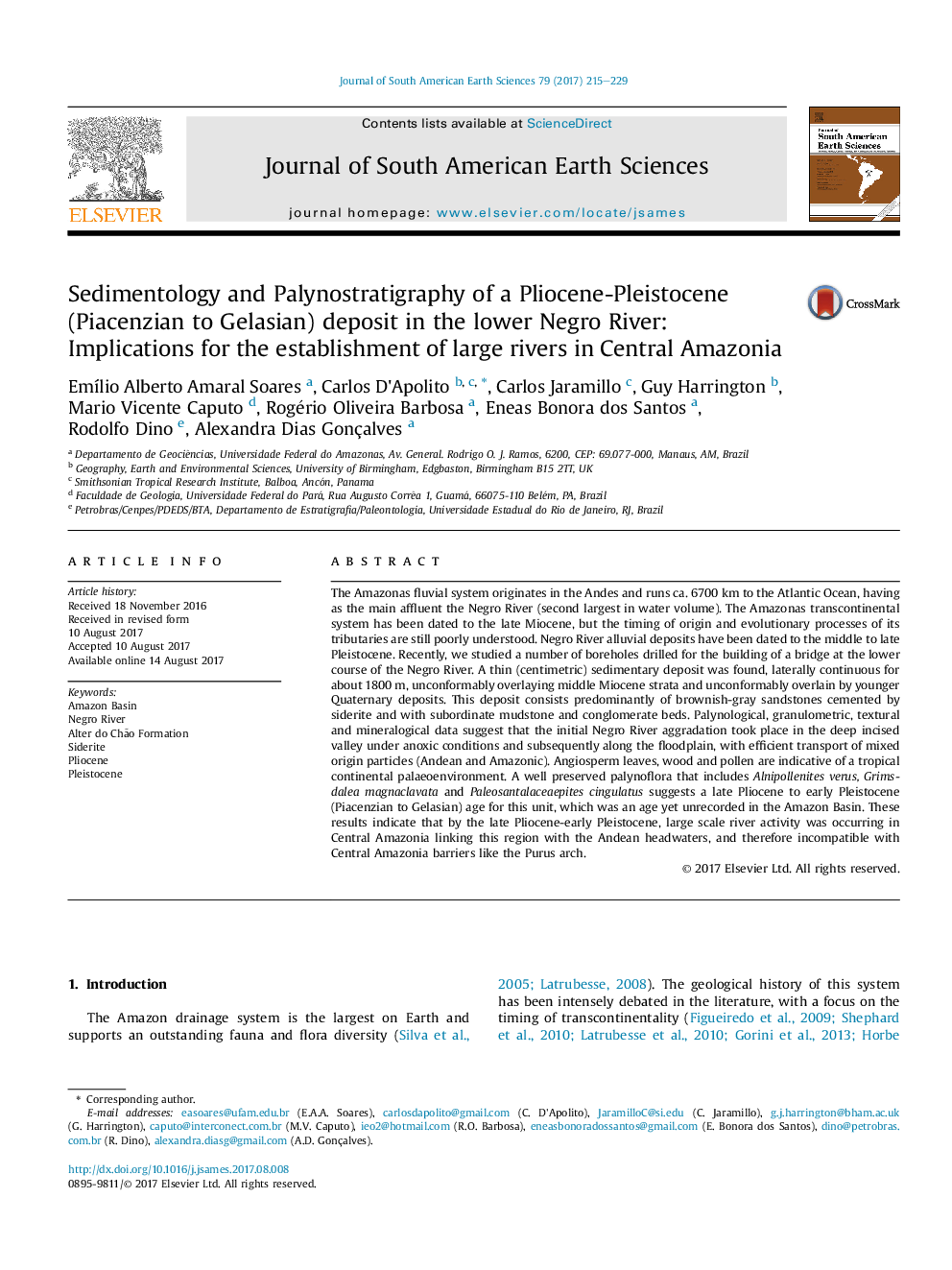| کد مقاله | کد نشریه | سال انتشار | مقاله انگلیسی | نسخه تمام متن |
|---|---|---|---|---|
| 5780401 | 1635131 | 2017 | 15 صفحه PDF | دانلود رایگان |
- Sedimentology and palynology of a new unit from the Negro River is presented.
- These sediments formed in continental settings with a pollen age between â¼3.6 and 1.9 Ma.
- The new unit supports large fluvial processes since at least â¼3.6-1.9 Ma at the Negro-Amazonas Rivers.
The Amazonas fluvial system originates in the Andes and runs ca. 6700Â km to the Atlantic Ocean, having as the main affluent the Negro River (second largest in water volume). The Amazonas transcontinental system has been dated to the late Miocene, but the timing of origin and evolutionary processes of its tributaries are still poorly understood. Negro River alluvial deposits have been dated to the middle to late Pleistocene. Recently, we studied a number of boreholes drilled for the building of a bridge at the lower course of the Negro River. A thin (centimetric) sedimentary deposit was found, laterally continuous for about 1800Â m, unconformably overlaying middle Miocene strata and unconformably overlain by younger Quaternary deposits. This deposit consists predominantly of brownish-gray sandstones cemented by siderite and with subordinate mudstone and conglomerate beds. Palynological, granulometric, textural and mineralogical data suggest that the initial Negro River aggradation took place in the deep incised valley under anoxic conditions and subsequently along the floodplain, with efficient transport of mixed origin particles (Andean and Amazonic). Angiosperm leaves, wood and pollen are indicative of a tropical continental palaeoenvironment. A well preserved palynoflora that includes Alnipollenites verus, Grimsdalea magnaclavata and Paleosantalaceaepites cingulatus suggests a late Pliocene to early Pleistocene (Piacenzian to Gelasian) age for this unit, which was an age yet unrecorded in the Amazon Basin. These results indicate that by the late Pliocene-early Pleistocene, large scale river activity was occurring in Central Amazonia linking this region with the Andean headwaters, and therefore incompatible with Central Amazonia barriers like the Purus arch.
Journal: Journal of South American Earth Sciences - Volume 79, November 2017, Pages 215-229
